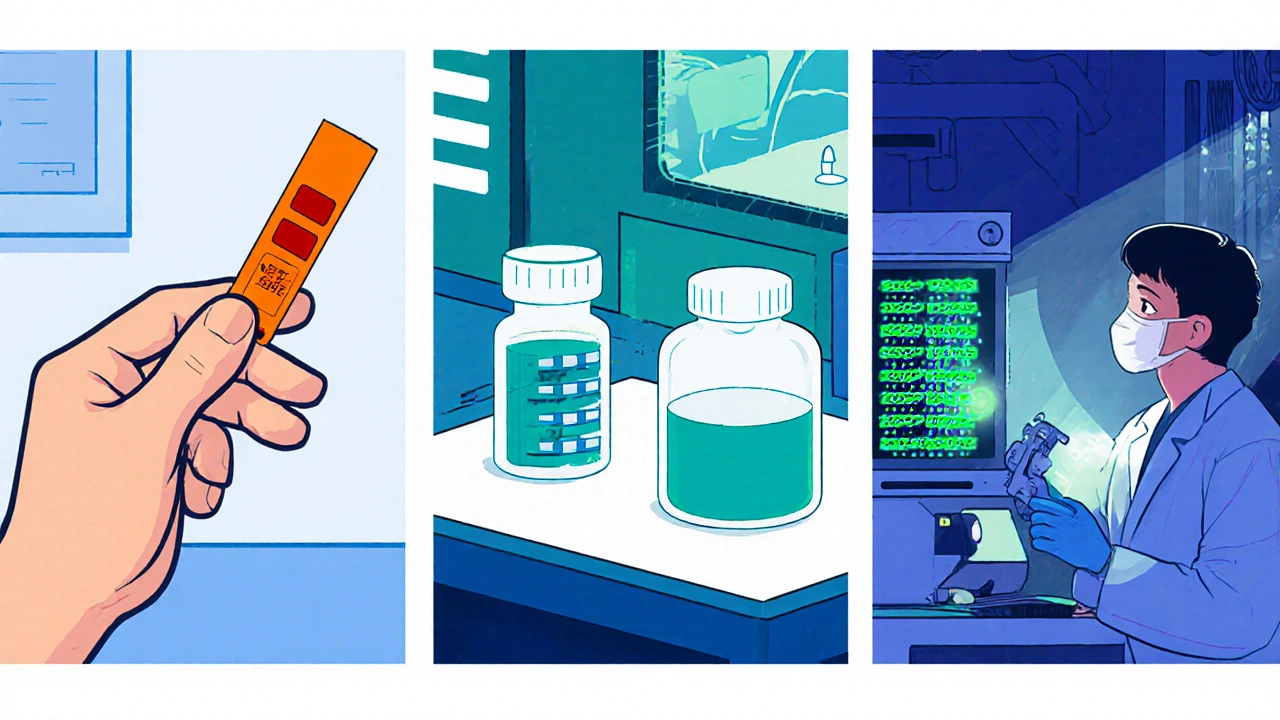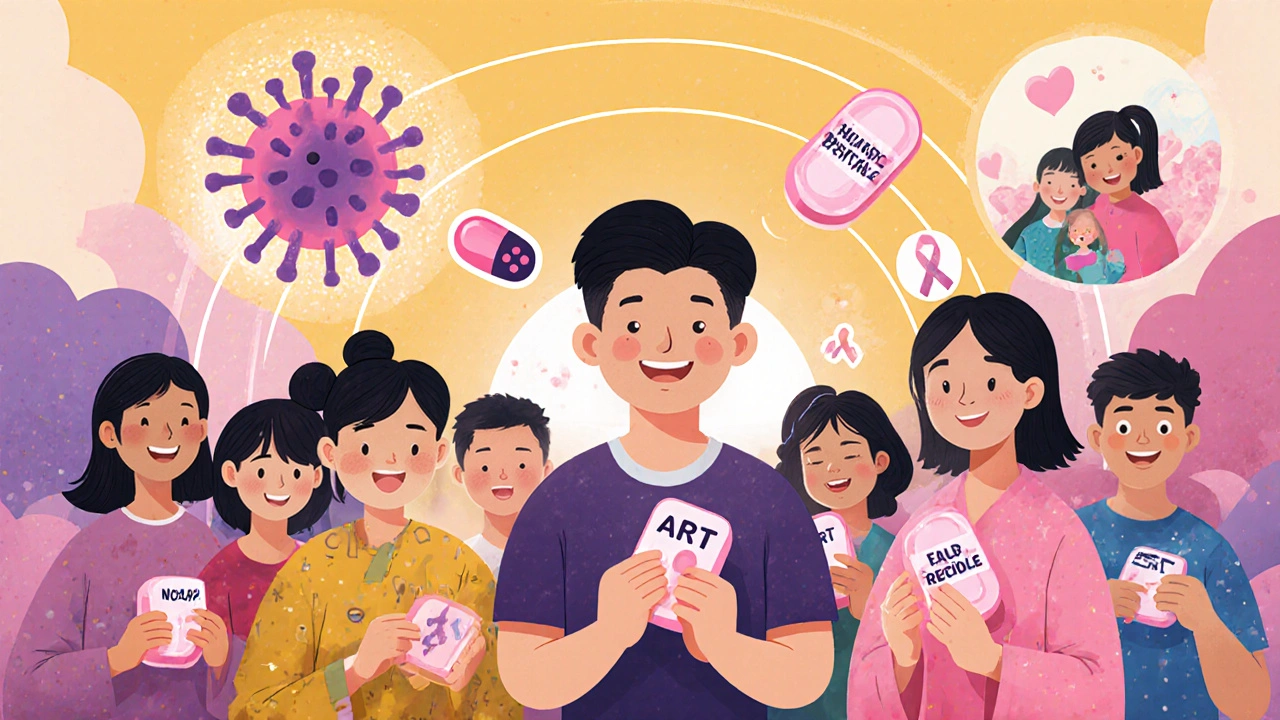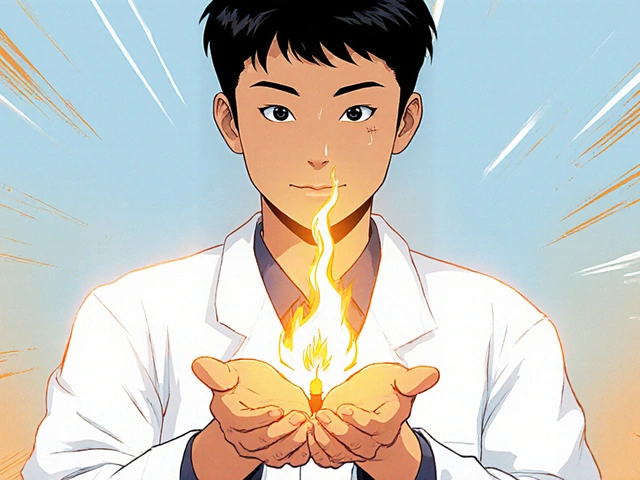HIV Test Window Calculator
This tool helps you determine when you can get an accurate HIV test based on your potential exposure date and the type of test you're considering.
Test Selection
Recommended Testing Timeline
Important: Testing before the window period has passed may yield false negative results. For the most accurate results, wait until the recommended testing period has passed.
Key Takeaways
- Testing within weeks of exposure catches HIV before the virus spreads.
- Starting antiretroviral therapy (ART) right away keeps the immune system strong.
- Early treatment reduces transmission risk to virtually zero (U=U).
- Simple steps-know your risk, get tested, start care-make a huge difference.
- Community support and clear guidelines help overcome stigma and access barriers.
Imagine catching a fire when it’s just a spark instead of a raging blaze. That’s what HIV/AIDS is-a virus that slowly weakens the immune system. Spotting it early, often called early HIV detection, changes everything. It means you can start treatment before the body’s defenses crumble, keep your health on track, and stop the virus from spreading to others. This article walks through why acting fast matters, how testing works, the health benefits of immediate care, and what you can do right now to protect yourself and your community.
Why catching HIV early matters
When the virus enters the bloodstream, it begins a silent assault. Within days, it replicates, and by two weeks the viral load spikes. Without treatment, the CD4 count-an indicator of immune strength-drops steadily. Studies from the WHO show that people diagnosed within three months of infection live, on average, 10‑12 years longer than those who learn they have HIV after a year. Early detection also cuts the chance of opportunistic infections like tuberculosis or pneumonia, which account for a large share of AIDS‑related deaths worldwide.
How modern HIV tests work
There are three main types of HIV testa medical test that detects antibodies, antigens, or viral RNA to determine HIV infection you’ll encounter:
- Rapid antibody tests - give results in 20 minutes, best after a 3‑month window period.
- Fourth‑generation combo tests - detect both antibodies and p24 antigen, shortening the window to about two weeks.
- RNA PCR tests - look directly for viral genetic material, catching infection within 7‑10 days of exposure.
Knowing which test matches your situation helps you plan the right follow‑up. If you’ve had a recent risk event, an RNA PCR can provide peace of mind within days.

Benefits of starting antiretroviral therapy right away
When treatment begins early, Antiretroviral therapy (ART)a combination of medicines that suppress HIV replication and restore immune function does three things:
- It drives the viral load down to undetectable levels, usually within 3‑6 months.
- It preserves CD4 cells, keeping the immune system robust.
- It stops transmission. The U=U (Undetectable = Untransmittable) campaign shows that an undetectable viral load eliminates sexual transmission risk.
Data from the START trial (2015) reveal that participants who started ART immediately reduced the risk of serious AIDS‑related events by 75 % compared with those who delayed treatment until CD4 fell below 350 cells/µL.
Public‑health ripple effects of early treatment
Early detection and swift ART rollout aren’t just personal health moves; they shift the epidemic curve. The "Universal Test and Treat" strategy, endorsed by the WHO guidelinesWorld Health Organization recommendations for global health policy, aims to test 95 % of key populations and start treatment within a week for those who test positive. Countries that embraced this model, like Rwanda and Thailand, saw new infection rates drop by more than 30 % in five years.
Common barriers and how to break them
Even with clear benefits, many people hesitate. Stigma remains a powerful deterrent-fear of judgment can keep someone from seeking a HIV test. Cost and distance to clinics also play roles, especially in rural England and parts of Sub‑Saharan Africa.
Here are proven ways to overcome these hurdles:
- Community‑based testing sites that offer anonymity and free rapid tests.
- Online self‑test kits that can be ordered discreetly and mailed to your door.
- Integrating testing into routine health visits-your GP can include it in a blood draw.
- Education campaigns that normalize testing as a regular health check, much like blood pressure screening.

Step‑by‑step checklist for early testing
- Identify your risk: unprotected sex, sharing needles, or a recent partner’s status.
- Choose a testing method that matches your timeline (rapid, combo, or PCR).
- Schedule the test-many pharmacies in Nottingham now offer walk‑in rapid testing.
- If positive, ask for a baseline viral load and CD4 count measurement.
- Start ART within a week-most clinics can begin same‑day treatment.
- Set up follow‑up appointments at 1, 3, and 6 months to confirm viral suppression.
- Consider preventive options for your partners: Pre‑exposure prophylaxis (PrEP) or Post‑exposure prophylaxis (PEP) if a recent exposure occurred.
Early vs. late treatment: what the numbers say
| Metric | Early ART (within 3 months) | Late ART (after 12 months) |
|---|---|---|
| Average life expectancy gain | 12‑14 years | 5‑6 years |
| Rate of opportunistic infections | 4 % | 22 % |
| Probability of achieving undetectable viral load | 92 % | 68 % |
| Transmission risk to partners (per year) | ≈0 % | ~2‑3 % |
| Healthcare costs (first 5 years, USD) | $12,000 | $22,000 |
These figures illustrate that acting fast isn’t just a medical choice-it’s also an economic one. Fewer hospital stays and less need for expensive treatments translate into real savings for individuals and health systems.
Putting it all together
Early HIV detection reshapes the disease trajectory. It lets you stay healthy, keep loved ones safe, and contribute to a world where AIDS is no longer a public‑health emergency. By knowing your risk, accessing a reliable test, and starting ART without delay, you join a growing movement that is turning the tide against HIV.
How soon after exposure can I get an accurate HIV test?
A nucleic‑acid (RNA) test can detect the virus as early as 7‑10 days. Antibody/antigen combo tests become reliable after about two weeks, while standard antibody tests need 3‑4 weeks.
Is it safe to start ART right after a positive result?
Yes. Modern regimens are well‑tolerated, and starting within a week dramatically improves outcomes. Your clinician will run baseline labs and choose a regimen suited to your health profile.
Can I still transmit HIV if I’m on treatment?
When your viral load stays below 50 copies/mL, the risk of sexual transmission is effectively zero. This is the basis of the U=U campaign.
What should I do if I can’t afford ART?
Many NHS clinics provide free treatment, and charities like AIDS Support offer medication assistance. Online resources can help you locate local funding programs.
Do my partners need to take any medication after I start ART?
If you maintain an undetectable viral load, they don’t need PrEP for sexual exposure. However, for any recent unprotected exposure before you’re suppressed, PEP for 28 days can be considered.


Michael Vandiver
Got tested and felt relief – early detection saves lives! 😊
Harini Prakash
Great rundown! The earlier we catch HIV, the easier it is to stay healthy and keep our loved ones safe :) The combo tests are a solid middle ground if you’re unsure about timing. And remember, getting tested is just another routine check‑up, no need to feel weird about it.
Tiffany Davis
Early testing really does cut down on the chance of serious infections later on. Starting ART within a few weeks can bring the viral load down to undetectable levels. It also reduces the overall cost of care, which matters for anyone on a budget. So if you think you might have been exposed, don’t wait.
Bret Toadabush
All these “global health orgs” push early HIV testing just to push their own agenda, y’know? They want us all on some pharma leash while they line their pockets. Don’t be fooled by the shiny stats, it’s all a cover‑up. Stay wary and question why you’re being told to “test now”.
Iris Joy
Early HIV detection is a game‑changer for both individual health and public safety. When you get tested within the first two weeks after a possible exposure, you can confirm infection before the virus has a chance to establish a large reservoir. The RNA PCR test is the fastest way to know, delivering results in about a week. If you prefer a less invasive method, the fourth‑generation combo test gives reliable answers after two weeks and is available at most clinics. Once a positive result comes back, a baseline viral load and CD4 count should be ordered right away. Modern ART regimens are generally well‑tolerated, with once‑daily pills that have minimal side effects. Starting therapy within a week of diagnosis typically drives the viral load to undetectable levels in three to six months. Achieving an undetectable viral load means you’re effectively untransmittable, which is the core of the U=U campaign. This also dramatically cuts the risk of opportunistic infections like TB and pneumonia that can be life‑threatening. From an economic perspective, early treatment reduces hospital stays and expensive acute care, saving thousands of dollars over a few years. Community‑based testing sites, many of which operate anonymously, remove the barrier of stigma. If you value privacy, at‑home self‑test kits can be ordered online and mailed discreetly to your door. Integrating HIV screening into routine health visits, such as during a blood draw for cholesterol, normalizes the process. Education campaigns that treat HIV testing like a regular blood pressure check help shift cultural attitudes. Finally, remember to discuss PrEP or PEP options for partners, especially if you haven’t yet reached viral suppression. By following these steps, you not only protect yourself but also contribute to the broader goal of ending the epidemic.
Rachael Turner
I hear you – the roadmap you laid out is solid and reassuring. It’s easy to feel overwhelmed, but breaking it down into those bite‑size actions makes a huge difference. Knowing that the science backs up early ART gives a boost of confidence that we’re on the right track.
Suryadevan Vasu
The key takeaway: test early, start ART promptly, and maintain regular follow‑ups to ensure suppression.
Vin Alls
Whoa, talking about early HIV detection feels like flipping a switch from darkness into blazing neon hope – the meds swoop in like superhero sidekicks, blasting the virus back into the shadows.
Don Goodman-Wilson
Oh sure, blame the “global health orgs” for trying to keep us healthy – because caring for public health is obviously the worst conspiracy ever imagined.